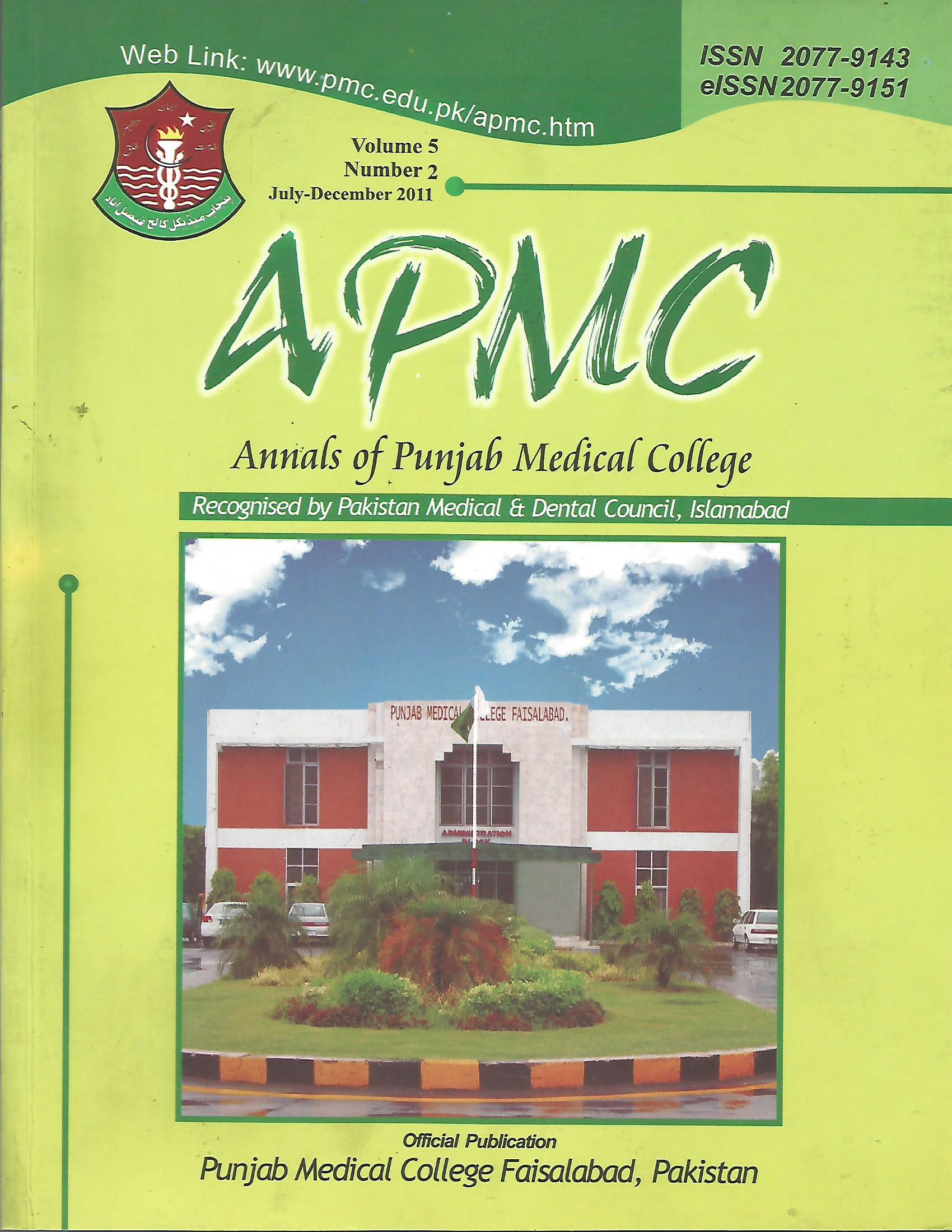Asymptomatic Bacteriuria Among Pregnant Women
Abstract
Objective: To determine the prevalence of asymptomatic bacteriuria (AB) during pregnancy. Study Design: Non interventional, cross sectional study. Place and Duration of Study: Department of Obst. & Gynae DHQ Hospital Faisalabad from May 2010 to July 2010. Materials And Methods: A total of 400 consecutive pregnant women were recruited for this study. All subjects were clinically identified to have no signs and symptoms of UTI. Clean catch midstream urine sample was collected from each patient into sterile container. The urine samples were examined microscopically and by cultural method. Socioeconomic Status and Education: Socioeconomic status is defined by key demographic and economic characteristics (reported in Government of Pakistan Economic Survey of Pakistan-2001-2, Islamabad, Ministry of Finance, June (2002).The most important variable describing and classifying SES was annual house hold income (US$<500 = Low, US$500-1000 = Middle). Result: A total of 20 (5%) were positive for significant bacteriuria. Significant relationship was found between ASB with ages, parity and socioeconomic status. With regard to age, 5 (25%) women were below 25yrs 11(55%) between 25-35 and 4(20%) were above 35yrs. Regarding parity, 4(20%) were primigravida and 16(80%) were multigravida. As far as socioeconomic status is concerned 12 (60%) belong to low socioeconomic class and 8(40%) from middle. No significant relationship was determined between AB and gestational age and diabetes. Conclusion: Asymptomatic bacteriuria is not uncommon among antenatal patients. Routine urine cultural test should be carried out on all antenatal patients in order to identity any unsuspecting infection.

 This work is licensed under a
This work is licensed under a 